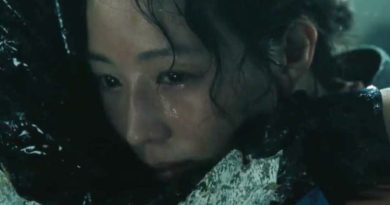Capsule Review: The Devil’s Bath (2024) – A Sombre and Haunting Slow-Burn Led By Anja Plaschg’s Remarkable Performance
“I’ve committed a crime”.
That’s the first dialogue heard in the opening five minutes of The Devil’s Bath (originally Des Teufels Bad in German), marking Austrian directing duo Veronika Franz and Severin Fiala’s first movie in five years since 2019’s The Lodge. They, of course, is best known for their creepy feature debut Goodnight Mommy ten years ago.
The dialogue in question is uttered by a woman after she commits something unspeakable. The way Franz and Fiala chose to shoot the scene in a casual, yet matter-of-fact grimness evokes an immediate sense of unease. The disturbing opening scene also foreshadows what happens later in the movie.
The story takes place in 1750 Austria as we first see a young woman named Agnes (Anja Plaschg) happily married to Wolf (David Scheid). But her marriage doesn’t turn out to as blissful as expected. Wolf may have been caring but he’s hardly an affectionate type. He barely shows interest when comes to intimacy with her. Her daily, mundane routine consisting of her catching fishes in the lake with Wolf and the villagers early in the morning. Part of her work also includes picking up stones and distributing a small loaf of bread to the villagers.
Then, there’s Wolf’s dominating mother (Maria Hofstätter) who always have something to say about Agnes. Even as petty as telling her how she should place her cooking utensils in the kitchen. It’s all monotonous life for her and the movie reflects that with an appropriately slow-burn approach. I have to admit the unhurried pace can be a chore to sit through.
But Franz and Fiala’s absorbing direction have their ways in immersing me into the time capsule of its 18th century period in the rural Austria. Cinematographer Martin Gschlacht captures the rugged beauty of the Austrian wilderness regardless of day or night, even in low-light settings. The sombre visuals evoke the deeply melancholic feel and look while mirroring Agnes’ gradual descent into depression, loneliness and hopelessness. It also helps that Anja Plaschg inhabits her role as the increasingly dispiriting Agnes. We feel the pain and despair that she’s been through with her husband’s insensitivity and her mother-in-law’s constantly critical behaviour only making things worse. She even pulls double duty as the movie’s music composer with her atmospheric score.
Then comes the payoff, culminating in Agnes’ eventual sin that is both frightening and pessimistic. Franz and Fiala stay pragmatic with their elegantly composed shots during the finale and let’s just say it gives me the feeling of Midsommar-like queasiness (you have to see it for yourself).
All this may sound like a make-believe folk horror but as it turns out, Franz and Fiala inspired their movie from a shocking true story of Agnes Catherina Schickin and Eva Lizlfellnerin. It even ends with a disclaimer stating that “over 400 cases are documented in German-speaking regions alone”. It happened during the 17th and 18th century Europe, where suicidal people resorted to murder due to preventing themselves from the “eternal damnation”. These people would confess their murder and accept punishment through execution.
The Devil’s Bath is currently streaming on Shudder.





